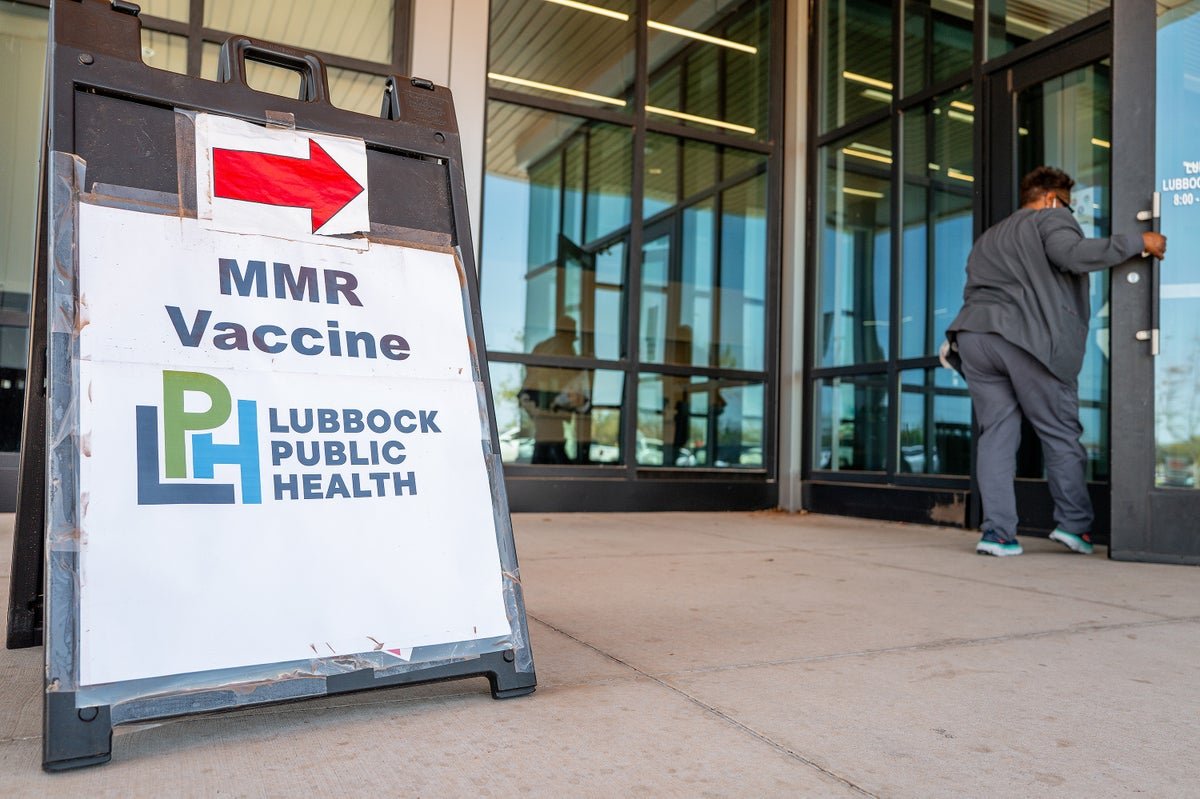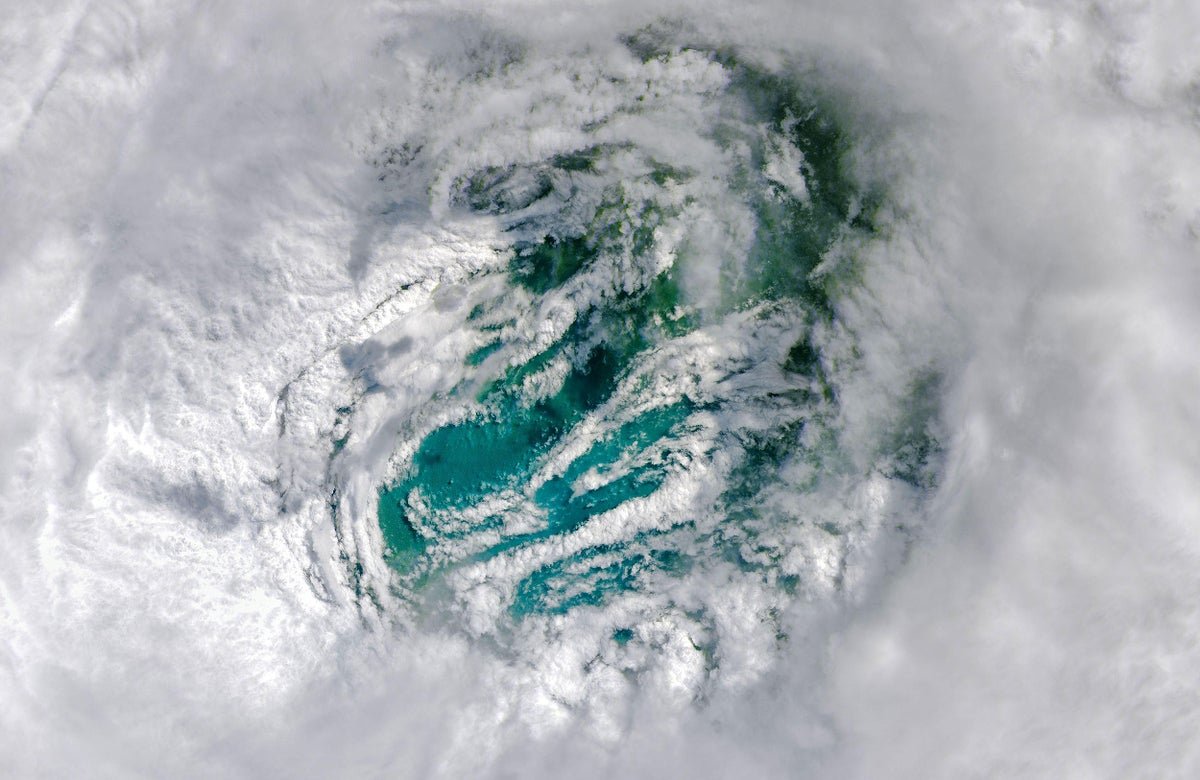On Monday Texas health officials said the state’s massive measles outbreak, which killed two unvaccinated children, had come to an end.
It’s the close of the largest single measles outbreak that the U.S. has seen since 2000, when health agencies declared the disease eliminated in the country. In recent years vaccination rates have wavered, and the disease has slowly been making a comeback. In Texas’s outbreak, which began in January in a largely unvaccinated population in Gaines County in West Texas, at least 762 people became sick, including the two children who died. The outbreak also spread to other states through travel, killing an unvaccinated adult in New Mexico. The Texas Department of State Health Services (DSHS) has not received reports of a new case in the most highly affected counties since July 1, passing the 42-day threshold that is standard for monitoring measles outbreaks.
But infectious disease and public health experts tell Scientific American that the end of an outbreak is not the end of the disease.
On supporting science journalism
If you’re enjoying this article, consider supporting our award-winning journalism by subscribing. By purchasing a subscription you are helping to ensure the future of impactful stories about the discoveries and ideas shaping our world today.
As of August 19, the Centers for Disease Control and Prevention has logged 35 outbreaks in 41 states, sickening a confirmed 1,375 people. Two thirds of the infections have been in children and teenagers under age 19. With school back in session, experts say measles could easily surge again in communities in Texas with low vaccination rates and elsewhere by winter.
“The public needs to know that even though the current outbreak in Texas had ended, there is still an increased risk of additional measles cases related to travel and the large outbreaks in both Mexico and Canada. If a person is not immune to measles, they have a 90 percent chance of getting measles if they are exposed to the virus,” wrote Lara Anton, senior press officer for the DSHS, in an e-mail to Scientific American. She added that the state’s health department is encouraging people to get vaccinated to help stop the spread of the disease.
Angela Rasmussen, a virologist at the University of Saskatchewan, says Texas may be especially prone to another outbreak because of antivaccine rhetoric.
“It’s been 42 days since the [last] case was reported, but that doesn’t necessarily mean that there are no more cases,” she says. “Measles spreads so easily, and there has been so much activity in Texas by antivaccine organizations to discourage measles vaccination.”
Only 77 percent of kindergartners in Gaines County received measles vaccinations during the 2024–2025 school year, according to DSHS surveys. Meanwhile school vaccine exemptions continue to rise to all-time highs. Beyond Texas, the national vaccine rate in younger U.S. children has been steadily falling for years.
“There are almost certainly still susceptible individuals, specifically unvaccinated children, in these West Texas counties.” —Gabriel Benavidez, epidemiologist, Baylor University
The dip in infections may come from multiple factors, such as the natural pattern of the measles virus, as well as summer school breaks and local public health efforts in some counties. In Lubbock County, Texas, about 70 miles from the epicenter of the outbreak in Gaines County, health care workers administered an estimated 2,500 to 3,000 more vaccines to people during the outbreak than expected for that time, says Katherine Wells, public health director of the city of Lubbock.
“It’s important for kids to be up to date on all of their vaccines, not just the vaccine to protect from measles,” she says. “Our messaging from public health is really: don’t let your guard down.”
Measles is a highly contagious viral respiratory disease, causing a cough, fever and a splotchy rash. But one dose of the measles, mumps and rubella (MMR) vaccine can provide about 93 percent protection against measles. The second dose boosts protection to 97 percent. Approximately 92 percent of all U.S. cases this year were in people who were unvaccinated or whose vaccine status was unknown.
“This outbreak was a warning, a warning that we have a highly undervaccinated community,” says Paul Offit, an infectious diseases physician and director of the Vaccine Education Center at the Children’s Hospital of Philadelphia. “We need to make sure that, especially as kids come back to school, you vaccinate your child. This isn’t over.”
Why 42 Days Matter
Health authorities often use the benchmark of six weeks, or 42 days, of no new reported infections to determine when a measles outbreak is over. This is the amount of time it takes measles to go through two cycles of infection—generally representing the time required to incubate in one person, spread to the next and incubate in that newly infected individual. If 42 days passes without a confirmed infection, that chain of contagiousness is generally considered broken, explains Gabriel Benavidez, an epidemiologist at Baylor University in Texas.
“This means there is no evidence of active spread in the community at this time,” he says. “That said, it doesn’t mean the risk has been completely eliminated. There are almost certainly still susceptible individuals, specifically unvaccinated children, in these West Texas counties.”
About 90 percent of cases in Texas’s outbreak were centered in West Texas; 54 percent were concentrated in Gaines County.
Wells says local public health departments, including hers, are continuing to monitor for measles in partnership with hospitals and clinics. Multiple sites in the affected areas of Texas have wastewater surveillance in place. During the outbreak, Wells and her staff helped set up a testing site in Gaines County, which previously didn’t have a monitoring system. As people shed the measles virus into toilets and baths, scientists can test that water from sewers. When viral levels start to die down in wastewater, it’s a sign that the transmission of the virus is slowing.
“We’ve had zero measles in our wastewater for about six or seven weeks now,” Wells says. “When you get so many measles cases, so many children need medical care, and that would be reported. So I’m confident that we don’t have measles circulating from the outbreak. But that doesn’t mean someone’s not going to fly home from summer vacation from Europe or another place, and we see cases again.”
“As we move into the winter months in Texas, you will see measles come back—the only question is, ‘To what degree it comes back?’” —Paul Offit, director, Vaccine Education Center at Children’s Hospital of Philadelphia
By May, Benavidez says, the number of new cases was starting to slow down.
This aligns with the virus’s tendency to wane in the summer, Offit says, noting a major outbreak in Philadelphia that began in October 1990 and subsided by June 1991. The West Texas outbreak may have tapered off in a similar way, he says.
Measles can strike any time of the year, but “it was really a winter-spring disease,” Offit says. “I’m not sure why. It may have to do with the crowding associated with schools or just climate.”
But Wells points out that in addition to the natural waning of the virus, other public health measures, such as vaccination and isolation, are instrumental in stopping its spread.
Trouble with Travel
Measles outbreaks in the U.S. usually stem from people who contract the disease while traveling to a place where it is endemic. The CDC notes that these travel-acquired cases in the U.S. are largely in unvaccinated people.
“Cases of measles can be imported incredibly easily,” Rasmussen says. “I think the situation in Mexico shows this really well.”
Sometime after the start of Texas’s outbreak, a group of people from an unvaccinated Mennonite community in the affected area of West Texas traveled to locations in Mexico, including the state of Chihuahua which borders Texas. Epidemiological studies suggest this helped spur Chihuahua’s outbreak, which, as of August 19, stands at 3,872 confirmed cases.
Of the 14 measles deaths reported in Mexico, 13 occurred in Chihuahua, which has pockets of unvaccinated communities, journalist Gina Jiménez reported in Think Global Health.
“I can’t believe that Texas said the outbreak was over when, at the same [time], there’s this other report that shows a catastrophic outbreak just on the other side of the border,” Rasmussen says.
The fact that the virus crosses borders so easily is nothing new to public health practitioners. “We’re paying close attention to what’s happening in Mexico, especially because there are social connections and travel connections between folks in Gaines County and where the outbreaks are in Mexico,” Wells says.
More genomic information is needed to fully understand how outbreaks in different states and countries are linked to one another, Rasmussen says. But health agencies do have some data: Molecular sequencing of specimens from confirmed measles cases identified two genotypes of the virus, one of which was detected in outbreaks, particularly among Mennonite communities, in Canada, the U.S., Mexico and five other countries, according to the Pan American Health Organization (PAHO). The organization also reports a 34-fold increase in measles cases (with 10,139 confirmed reports as of August 8) across 10 countries in the Americas in 2025, compared with the same period in 2024.
Return to School and Waning Vaccination Rates
For a contagious virus like measles, at least 95 percent of a population needs to be vaccinated to reach the level of immunity required to stop the disease. But achieving that level has been a challenge lately. The CDC’s latest data on U.S. schools shows declining vaccination rates among kids who are entering kindergarten. According to The Texas Tribune, the state’s public health departments are also reporting a notable spike in exempting children from school vaccine requirements—in July 2025 Texas received more than 17,000 requests for the mail-in vaccine exemption form, which is 36 percent higher than in July 2023.
“In Texas, we’ve had nonmedical exemptions for a really long time,” Wells says. “You don’t have to have a religious or a medical reason to do that. It is concerning because the more people that choose that, it makes the vaccination rates lower in our schools.”
Offit and Benavidez both express concerns that the growing trend of school vaccine exemptions will reopen a window for measles now that school is back in session throughout most of Texas.
“As we move into the winter months in Texas, you will see measles come back—the only question is, ‘To what degree it comes back?’” Offit says.
Rasmussen thinks measles is only the beginning. She anticipates worsening rates of other vaccine-preventable diseases, such as whooping cough, rubella and polio, as U.S. leaders change policies to make it harder to access vaccines across the board. “Numbers are looking to increase, given our current health and human services secretary and his views on vaccines,” she says.
Years of eroding trust in vaccines, public health and the health care system also fuel outbreaks, Benavidez says.
“Access alone isn’t enough when people don’t want the vaccine to begin with,” he says. “What we need is real groundwork to rebuild trust: taking the time to listen, to acknowledge people’s concerns, even if we don’t agree with them, and to engage respectfully.”




